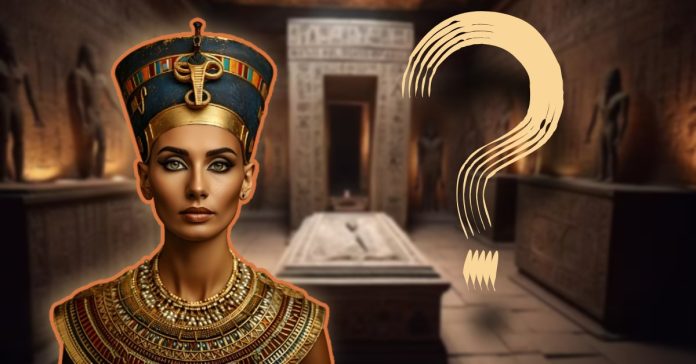Taposiris Magna, an ancient Egyptian site located roughly 30 miles west of Alexandria. It has emerged as a focal point in the quest to uncover the final resting place of Cleopatra VII. This temple complex, was established during the Ptolemaic period (circa 280–270 BC) by Ptolemy II Philadelphus. It served as a religious and commercial hub, connecting Lake Mareotis to Alexandria’s trade networks. Recent discoveries, including a remarkable 1,305-meter tunnel and a submerged port, have intensified interest in the site’s historical significance. These findings, combined with artifacts linked to Cleopatra’s era, fuel speculation that Taposiris Magna may hold the key to one of archaeology’s greatest mysteries. That being the location of Cleopatra’s tomb. Led by key researchers like Kathleen Martinez and Robert Ballard, the ongoing excavations reveal a complex interplay of religious symbolism, maritime infrastructure, and Ptolemaic history.
Historical and Cultural Significance of Taposiris Magna
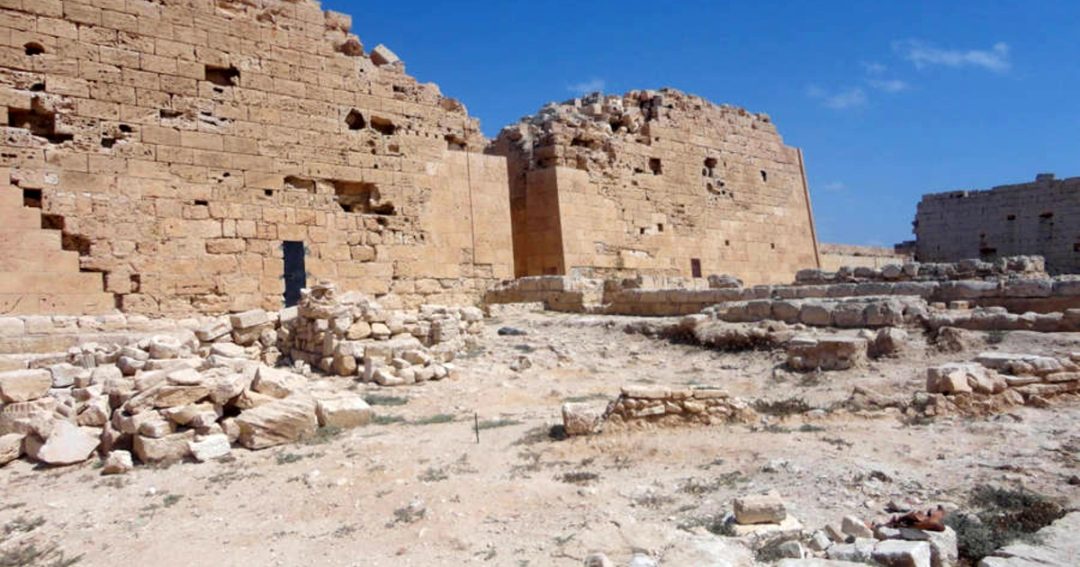
Founded on the shores of Lake Mareotis, Taposiris Magna was more than a temple dedicated to Osiris and Isis, deities central to Egyptian mythology. Its name, meaning “Great Tomb of Osiris,” reflects its religious importance, particularly its association with death and resurrection. The temple’s strategic location facilitated trade, linking overland routes with maritime pathways to Alexandria, the Ptolemaic capital. This dual role as a spiritual and economic center underscores its prominence during Cleopatra’s reign (51–30 BC). Unlike Alexandria, which suffered extensive destruction from earthquakes and tsunamis, Taposiris Magna’s relative preservation offers a unique window into Ptolemaic Egypt.
The site’s significance extends beyond its historical function. Its connection to Cleopatra, who identified closely with Isis, suggests a deliberate choice for her burial. Roman historian Plutarch noted that Cleopatra constructed a tomb near a temple of Isis. This detail aligns with Taposiris Magna’s religious context. Many Egyptologists argue Cleopatra was buried in Alexandria. But the lack of definitive evidence there has shifted attention to this coastal site. The temple’s alignment with the Mediterranean and its recent archaeological discoveries bolster the theory that it played a critical role in Cleopatra’s final days.
Taposiris MagnaTunnel
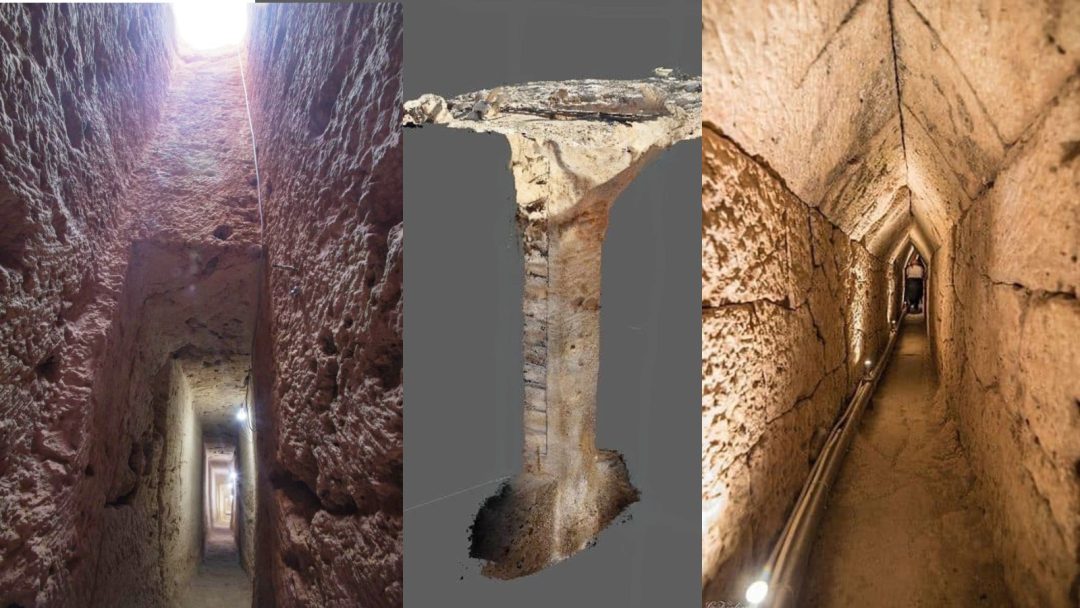
In 2022, a team led by Dominican archaeologist Kathleen Martinez unearthed a 1,305-meter tunnel beneath Taposiris Magna, carved 13 meters below ground through sandstone. This engineering feat, partially submerged in water, stretches toward the Mediterranean Sea, terminating at an area dubbed “Salam 5.” Its scale and precision have drawn comparisons to the Tunnel of Eupalinos, a sixth-century BCE aqueduct in Samos, Greece, renowned for its geometric accuracy. Standing roughly two meters tall, the tunnel’s construction suggests a significant purpose, possibly related to secretive transport or ritual activities.
The tunnel’s seaward trajectory directly aligns with a recently discovered submerged port, reinforcing its role in Taposiris Magna’s maritime network. Researchers believe this passageway may have facilitated the discreet movement of goods, people, or even Cleopatra herself after her defeat at the Battle of Actium in 31 BC. Kathleen Martinez posits that Cleopatra’s court, was aware of Octavian’s pursuit. And might have used the tunnel to transport her remains to a hidden burial site, evading Roman detection. This hypothesis, while controversial, gains traction from the tunnel’s physical connection to the port, suggesting a sophisticated infrastructure designed for both practical and symbolic purposes.
Taposiris Magna Submerged Port
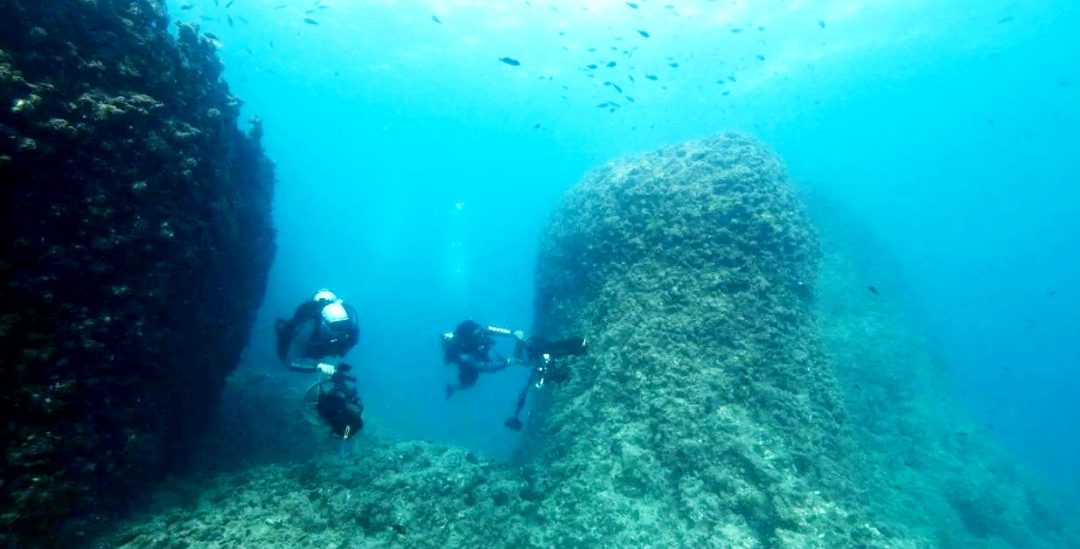
In September of 2025, a collaborative effort involving Martinez, Robert Ballard (famed for locating the Titanic), and underwater archaeologist Larry Mayer revealed a submerged port. The port is approximately 40 feet below the Mediterranean Sea. Using advanced sonar and bathymetric analysis, the team mapped stone structures. The found towering columns, polished floors, cemented blocks, and scattered Ptolemaic-era artifacts. The port, protected by coral reefs, served as an inner harbor, likely facilitating trade between Taposiris Magna, Lake Mareotis, and Alexandria. Its discovery highlights the site’s economic vitality, challenging earlier assumptions that Taposiris Magna was solely a religious center.
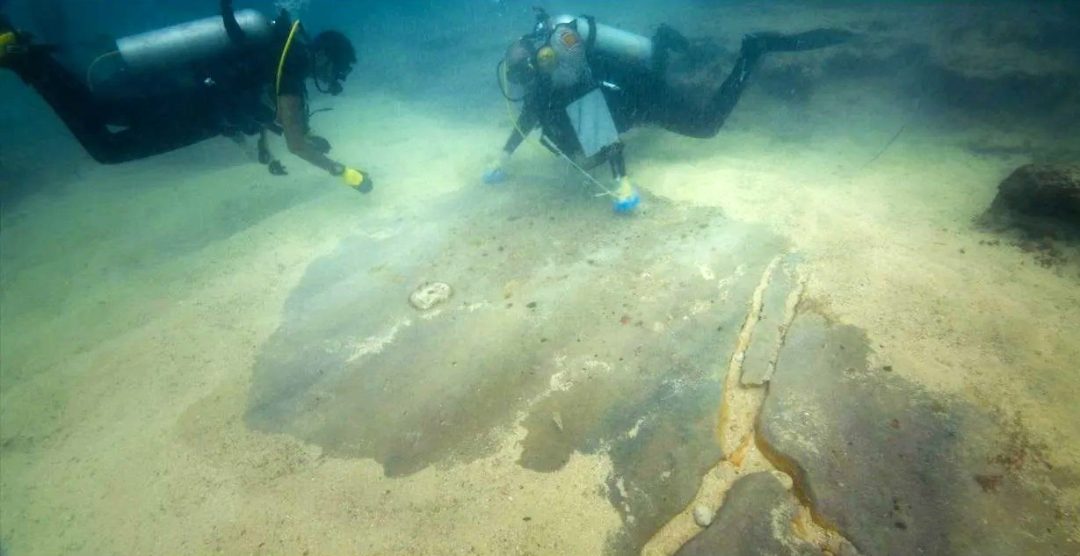
The port’s alignment with the tunnel suggests a deliberate integration of terrestrial and maritime infrastructure. This connection implies that Taposiris Magna functioned as a critical node in Ptolemaic Egypt’s trade network. One that handling goods transported across the lake and sea. The submersion of the port, likely caused by a tsunami from the 365 CE Crete earthquake and subsequent sea level rise, mirrors the fate of nearby coastal cities like Thonis-Heracleion and Canopus. These findings enhance our understanding of Ptolemaic maritime operations and underscore Taposiris Magna’s strategic importance.
Artifacts Linking Taposiris Magna to Cleopatra
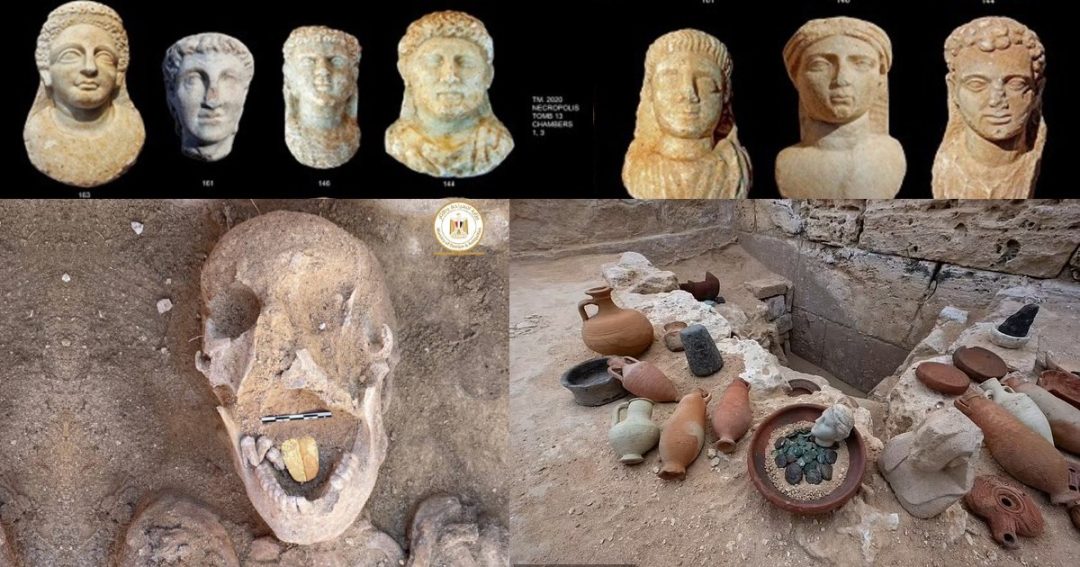
Excavations at Taposiris Magna and its port have yielded artifacts that strengthen the site’s association with Cleopatra. Coins bearing Cleopatra VII’s likeness and figures of Alexander the Great have been uncovered, alongside ceramic jars, amphorae, and figurines of Isis. These items, dated to the first century BC, align with Cleopatra’s reign and reflect her cultural and religious affiliations. The presence of gilded mummies and objects inscribed with Cleopatra’s image further supports the theory that the site held personal significance for the queen. At the port, researchers found stone and metal anchors of varying sizes. Alongside amphorae, indicating active maritime trade during the Ptolemaic period. These artifacts collectively suggest that Taposiris Magna was a place of both practical and symbolic importance, potentially chosen by Cleopatra for her final resting place.
The Search for Cleopatra’s Tomb
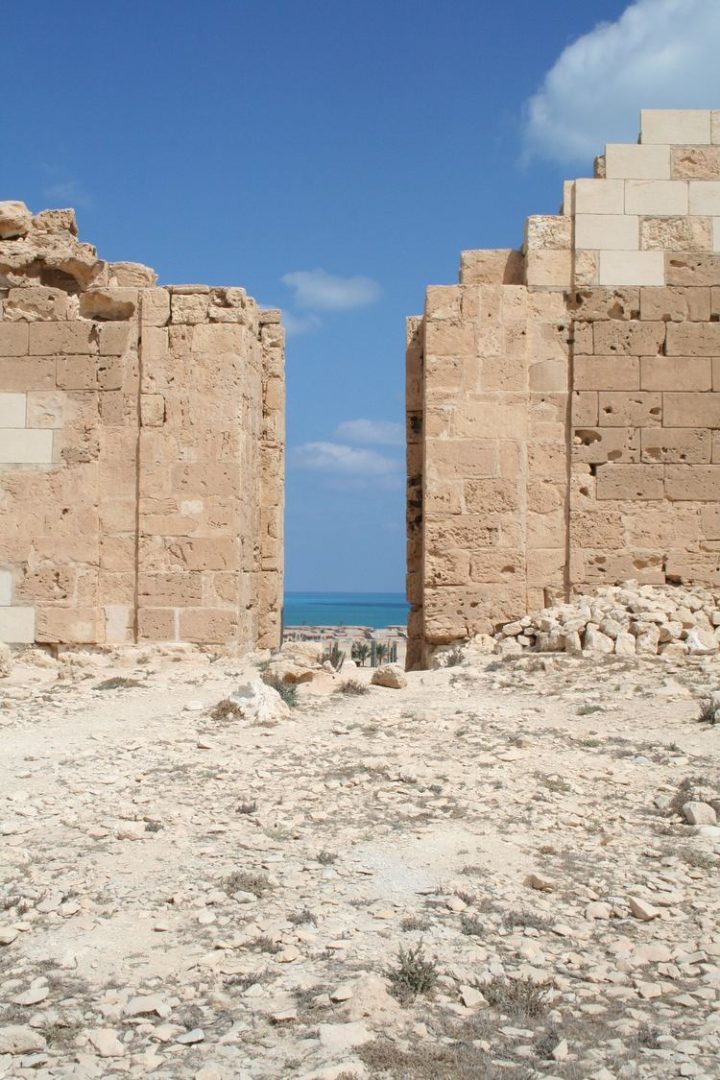
Kathleen Martinez, a former criminal lawyer turned archaeologist from the Universidad Nacional Pedro Henriquez Ureña, has driven the Taposiris Magna excavations since 2004. Her theory challenges conventional Egyptology, which places Cleopatra’s tomb in Alexandria’s submerged royal quarter. Martinez argues that Cleopatra, facing Roman conquest after Actium, chose Taposiris Magna for its religious significance and strategic isolation. She believes Cleopatra and Mark Antony were secretly transported through the tunnel to the temple complex, where they were buried in a location hidden from Octavian. The discovery of the tunnel and port supports this narrative, suggesting a clandestine burial plan to preserve Cleopatra’s legacy.
Martinez’s hypothesis remains contentious. Many scholars argue that Alexandria, as the Ptolemaic capital, is the more likely burial site, citing historical accounts and the lack of definitive textual evidence for Taposiris Magna. The absence of Cleopatra’s tomb or direct proof, such as an inscribed sarcophagus, fuels skepticism. Additionally, the site’s submersion and seismic history complicate excavations, requiring advanced technology like sonar and underwater archaeology. Despite these challenges, Martinez’s discoveries,have shifted the conversation, prompting renewed interest in Taposiris Magna as a viable candidate.
Key Researchers Behind the Discoveries
The Taposiris Magna project owes much to Kathleen Martinez’s persistence and unconventional approach. Her background in law informs her methodical analysis, treating the search for Cleopatra’s tomb like a criminal investigation. Robert Ballard, renowned for discovering the Titanic wreck, brings expertise in underwater exploration, contributing to the port’s mapping. Larry Mayer, from the University of New Hampshire, provides technical proficiency in sonar and bathymetric analysis, enabling precise seabed surveys. The Egyptian Navy Hydrographic Department and the Supreme Council of Antiquities’ Underwater Antiquities Department have also played critical roles. This interdisciplinary team combines archaeological, geological, and maritime expertise, advancing our understanding of Taposiris Magna’s historical role.
Broader Implications for Ptolemaic Egypt
The discoveries at Taposiris Magna illuminate the complexity of Ptolemaic Egypt’s infrastructure and cultural landscape. The tunnel and port reveal a sophisticated network that integrated religious, economic, and strategic functions. The site’s artifacts, from coins to amphorae, highlight Cleopatra’s influence as a ruler who blended Egyptian and Hellenistic traditions. Whether or not the tomb is found, these findings enrich our knowledge of Taposiris Magna’s role in connecting Alexandria to broader Mediterranean trade routes. The ongoing excavations, supported by advanced technology and international collaboration, promise further revelations about Egypt’s Ptolemaic past.
Conclusion: A Step Closer to Cleopatra
Taposiris Magna stands as a testament to Cleopatra’s enduring legacy and the ingenuity of Ptolemaic Egypt. The tunnel and submerged port, uncovered through the efforts of Kathleen Martinez, Robert Ballard, and their team, reveal a site of immense historical and archaeological significance. Artifacts linking the site to Cleopatra’s era fuel speculation that her tomb lies hidden within or near the temple complex. While debates persist, the discoveries at Taposiris Magna underscore its role as a religious and commercial hub. They may offer new perspectives on Cleopatra’s final days. As excavations continue, the site may yet unlock the secrets of Egypt’s last pharaoh, bringing us closer to solving one of history’s greatest mysteries.

